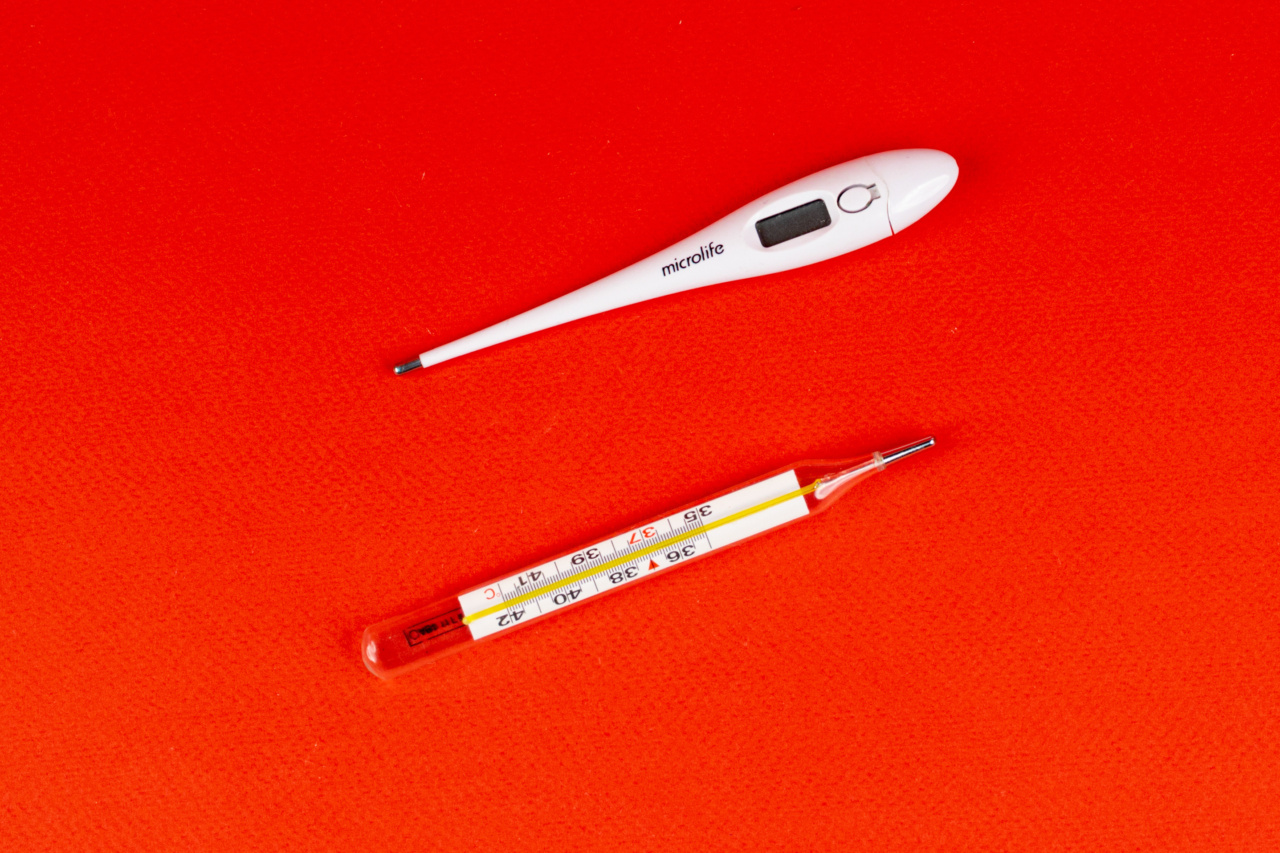A mercury thermometer is a type of glass thermometer that uses mercury to measure temperature. While mercury thermometers have been widely used in the past, they are now being phased out due to the toxic nature of mercury.
If a mercury thermometer breaks, it can release small amounts of mercury vapor and liquid mercury, which can be harmful to humans and the environment. In this article, we will explore what happens when a mercury thermometer breaks and what steps should be taken to safely clean up and dispose of the broken thermometer.
Health Hazards of Mercury
Mercury is a toxic heavy metal that can cause serious health problems if inhaled, ingested, or absorbed through the skin. The primary route of exposure to mercury vapor is through inhalation.
Breathing in even small amounts of mercury vapor can lead to health issues, especially in sensitive individuals such as pregnant women, infants, and young children.
Some common health effects associated with mercury exposure include:.
- Damage to the brain, nervous system, and kidneys
- Respiratory problems
- Memory loss and cognitive difficulties
- Headaches and migraines
- Behavioral changes
- Developmental delays in children
Immediate Actions
If a mercury thermometer breaks, it is important to take immediate actions to minimize the risk of mercury vapor exposure. Here are the steps you should follow:.
- Evacuate the area: If the thermometer breaks indoors, ensure everyone leaves the room or area where the breakage occurred. Close off the affected area to prevent the spread of mercury vapor.
- Ventilate the area: Open windows and doors to allow fresh air to circulate. Use fans to help disperse the mercury vapor out of the room.
- Keep people away: Restrict access to the area until it has been cleaned up and deemed safe. Advise others to avoid entering the room to prevent accidental exposure.
- Avoid direct contact: Do not touch the broken thermometer or any spilled mercury with bare hands. Mercury can be absorbed through the skin, so it is crucial to minimize contact.
Clean-up Process
After ensuring that everyone is safe and the area is properly ventilated, you can begin the clean-up process for a broken mercury thermometer:.
- Put on protective gear: Wear disposable gloves, goggles, a face mask, and a lab coat or apron to protect yourself from potential mercury exposure.
- Collect larger mercury beads: Use disposable plastic scoops, pieces of stiff paper, or index cards to carefully gather larger mercury beads into a clean glass or plastic container with a tight-fitting lid. Avoid using a vacuum cleaner or broom, as it can spread mercury vapor and break the beads into smaller pieces.
- Use a mercury spill kit: If available, use a mercury spill kit, which typically contains specialized materials like sulfur powder or amalgamation powder to help collect and neutralize mercury. Follow the instructions provided with the spill kit.
- Use mercury-absorbent powder: Sprinkle mercury-absorbent powder, such as sulfur powder or a commercial mercury absorbent, on the spilled mercury. Gently brush it towards the center to amalgamate the smaller beads.
- Secure the mercury: Carefully transfer the collected mercury into a suitable airtight container (preferably glass or polyethylene) that can be securely sealed.
- Clean the area: Wipe the affected area with a damp paper towel or disposable wet wipes to pick up any remaining traces of mercury. Seal the used cleaning materials and gloves in a plastic bag for disposal.
- Check for residual mercury: Use a specialized mercury vapor analyzer or a handheld mercury detector to ensure that all traces of mercury have been properly cleaned up.
Disposal of Mercury
Mercury is considered hazardous waste and should never be disposed of in regular trash or poured down the drain. To dispose of the mercury collected from a broken thermometer:.
- Contact local authorities or waste management: Inquire about the proper disposal methods for mercury in your area. Many municipalities have special hazardous waste collection facilities or scheduled pick-ups.
- Transfer mercury to appropriate containers: Double-bag the container with the collected mercury to prevent leaks. Label it as “Mercury – Do Not Open” and include the date of collection.
- Secure transportation: If transporting mercury to a collection point, ensure it is securely packaged to prevent spills. Place the container in a sturdy box or container to minimize the risk of breakage during transportation.
- Inform waste management personnel: When handing over the mercury for disposal, inform the waste management personnel about the nature of the waste so that they can handle it appropriately.
Preventing Mercury Exposure in the Future
To minimize the risk of mercury exposure from thermometers, it is advisable to switch to alternative types of thermometers, such as digital thermometers or ones using non-toxic liquids for temperature measurement.
Additionally, take the following precautions:.
- Store thermometers in a secure and stable location, away from the reach of children or where they are likely to be knocked over.
- Handle thermometers with care and avoid unnecessary rough handling or dropping.
- Regularly inspect thermometers for cracks or signs of damage and replace them if necessary.
- Keep contact information for local hazardous waste disposal facilities readily available in case of emergencies.
Conclusion
A broken mercury thermometer can pose health risks due to the release of mercury vapor. It is crucial to promptly take appropriate actions for cleaning up the spilled mercury and ensuring its safe disposal.
By following the outlined steps and precautions, you can effectively manage and minimize the potential hazards associated with a broken mercury thermometer.






























